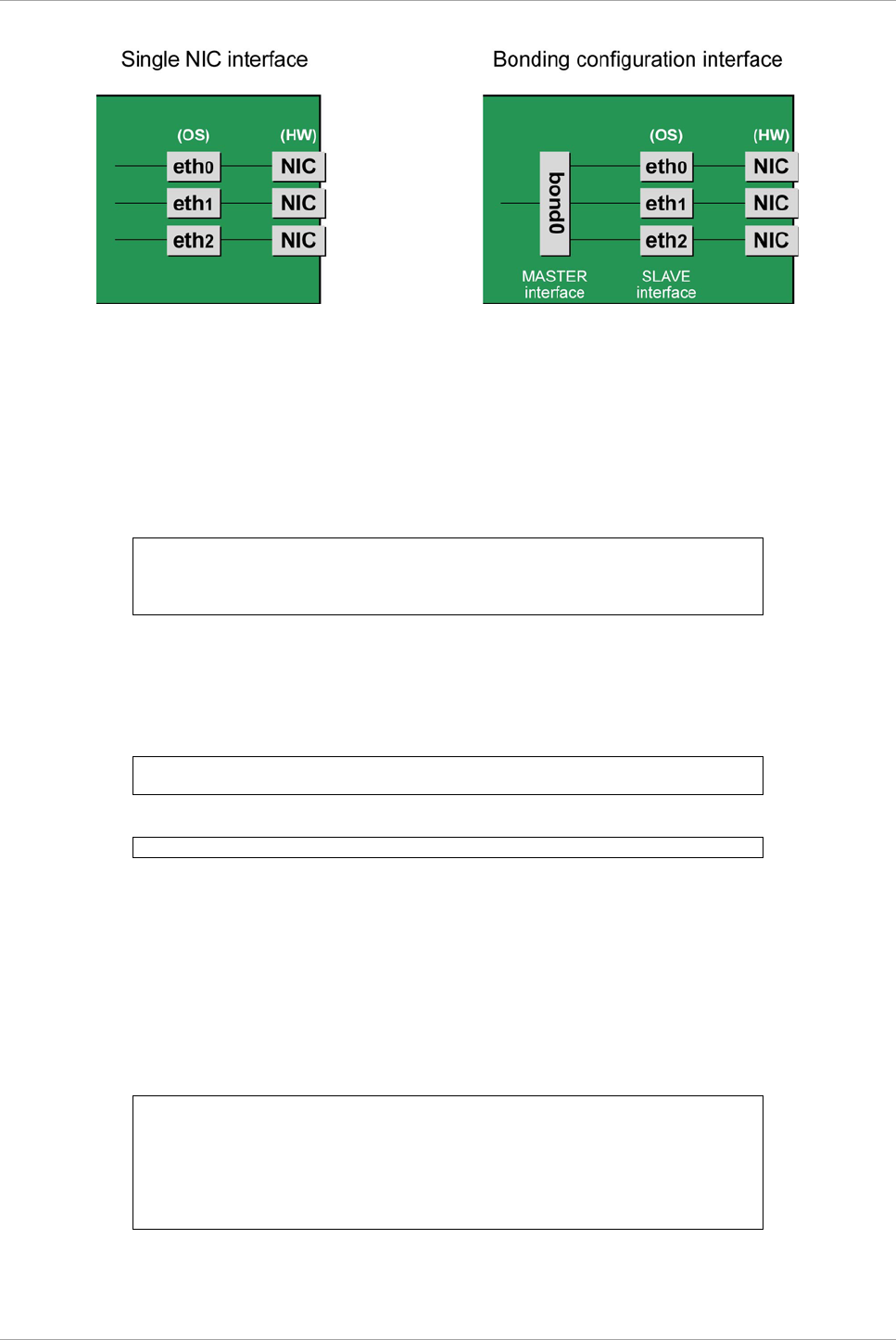
CHAPTER 4 PCI Card Hot Maintenance in Red Hat Enterprise Linux 6
4.8 Removing PCI Express cards
111
C122-E175-01EN
FIGURE 4.5 Single NIC interface and bonding configuration interface
NIC removal procedure
This section describes the procedure for hot plugging only a network card.
Note
When removing multiple NICs, be sure to remove them one by one. If you do this with multiple cards at the
same time, the correct settings may not be made.
1. Confirm the slot number of the PCI slot that has the mounted interface.
Confirm the interface mounting location through the configuration file information and the operating
system information.
First, confirm the bus address of the PCI slot that has the mounted interface to be removed.
# ls -l /sys/class/net/eth0/device
lrwxrwxrwx 1 root root 0 Sep 29 09:26 /sys/class/net ¥
/eth0/device
->../../../0000:00:01.2/0000:08:00.2/0000:0b:01.0
The ¥ at the end of a line indicates that there is no line feed.
Excluding the rest of the directory path, check the part corresponding to the file name in the symbolic link
destination file of the output results. In the above example, the underlined part shows the bus address.
("0000:0b:01" in the example)
Next, check the PCI slot number for this bus address.
# grep -il 0000:0b:01 /sys/bus/pci/slots/*/address
/sys/bus/pci/slots/20/address
Read the output file path as shown below, and confirm the PCI slot number.
/sys/bus/pci/slots/<slot number>/address
Notes
If the above file path is not output, it indicates that the NIC is not mounted in a PCI slot (e.g., GbE port in
the IOU).
With the PCI slot number confirmed here, see ‘D.2
Correspondence between PCI Slot Mounting Locations
and Slot Numbers
’ to check the mounting location, and see also ‘B.1 Physical Mounting Locations of
Components’ to identify the physical mounting location corresponding to the PCI slot number. You can
confirm that it matches the mounting location of the operational target NIC.
2. Confirm each interface on the same NIC.
If the NIC has multiple interfaces, you need to remove all of them. Confirm that all the interfaces that have
the same bus address in a subsequent command.
# ls -l /sys/class/net/*/device | grep "0000:0b:01"
lrwxrwxrwx 1 root root 0 Sep 29 09:26 /sys/class/net ¥
/eth0/device
->../../../0000:00:01.2/0000:08:00.2/0000:0b:01.0
lrwxrwxrwx 1 root root 0 Sep 29 09:26 /sys/class/net ¥
/eth1/device
->../../../0000:00:01.2/0000:08:00.2/0000:0b:01.1
The ¥ at the end of a line indicates that there is no line feed.
As the above example shows, when more than one interface is displayed, they are on the same NIC.


















